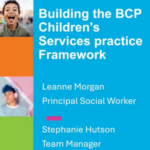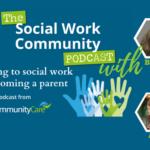
Children’s social care case numbers in England fell last year, official figures have shown.
Councils received fewer referrals and carried out fewer assessments in 2023-24 compared with 2022-23, according to the Department for Education’s annual children in need census.
As of 31 March 2024, authorities were supporting fewer children in need – a category that encompasses all those receiving a service from children’s social care – than they were 12 months earlier.
There was also a drop in the numbers on a child protection plan over the same period.
However, the number of child protection enquiries was stable year on year and well above pre-pandemic levels, while councils were also supporting more children in need than they were at the start of the decade.
Children in need statistics
- Referrals to children’s social care in 2023-24: 621,880, down from 640,430 in 2022-23 and 642,980 in 2019-20.
- Assessments carried out in 2023-24: 643,170, down from 655,540 in 2022-23 and 665,660 in 2019-20.
- Children in need at March 2024: 399,460, down from 403,090 in 2023, but up from 389,260 in 2020.
- Children on a child in need plan at March 2024: approximately 105,000, as in 2023, but down from about 110,000 in 2022.
- Child protection enquiries in 2023-24: 224,520, down from 225,400 in 2022-23, but up from 201,000 in 2019-20.
- Child protection plans at March 2024: 49,990, down from 50,780 in 2023 and 51,510 in 2020.
Falling numbers of referrals
The number of referrals to children’s social care fell for a second consecutive year with 4.4% fewer received in 2023-24 (621,880) compared with 2021-22 (650,270). It was also below the level seen in the year before the pandemic (2019-20).
The fall over the past two years has been driven by a reduction in the number of referrals from the police, the biggest source of reported concerns to children’s social care. Constabularies sent in 177,210 referrals in 2023-24, down 7.6% on the 191,840 they sent in 2021-22.
Health and schools referral numbers have also fallen over the past two years, but more slowly.
The proportion of referrals that were re-referred within 12 months of a previous report was 22.4% in 2023-24, the same as in 2022-23 and a similar rate to each of the previous three years.
Outcomes of referrals
The percentage of referrals that resulted in no further action fell from 7.1% in 2022-23 to 6.3% in 2023-24, the same rate as that recorded in 2019-20.
The proportion of referrals that resulted in an assessment in which the child was found not to be in need was also at a similar level in 2023-24 (30.3%) as in 2019-20 (30.2%), though an increase on that recorded in 2022-23 (29.9%).
The number of completed assessments fell from 655,540 in 2022-23 to 643,170 in 2023-24, with the level also below the 665,660 carried out in 2019-20.
Assessments taking longer
The frequencies with which specific needs were recorded following an assessment in 2023-24 were similar to those in 2022-23.
As in the previous year, mental health and domestic abuse concerns about a parent were the two most commonly recorded factors, with each cited in just under one-third of cases where such information was recorded.
However, over time, the (median) average duration of assessments has increased, hitting 34 days in 2023-24, up from 33 in 2022-23 and 32 in 2019-20.
Children in need more likely to be older and from minority background
As of 31 March 2024, 399,460 children were classed as in need, a category that includes those on child in need (CIN) plans and child protection plans, looked-after children, disabled children and care leavers. This was down 0.9% on the level recorded in March 2023 (403,090) but up 2.6% on the March 2020 figure (389,260).
The proportion of children in need from an ethnic minority rose from 25% to 31% from 2015-24, exceeding the 27% of children in England and Wales who were from a minority, as recorded by the 2021 Census.
There has also been a shift in age, with those over 10 accounting for 59% of children in need in 2024, up from 48% in 2015.
Using data from 150 of the 153 authorities, the DfE estimated that 105,000 children were on CIN plans as of March 2024, the same as in 2023, but down from 110,000 in 2022. It said these figures should be treated with caution as this particular statistic was still in development and councils were likely to have variable recording practices for it.
Child protection enquiry numbers remain high
While the number of child protection enquiries fell from 2022-23 to 2023-24, this was only by 0.4%, and the number carried out (224,520) was significantly above the pre-pandemic total (201,000).
However, the number of children on child protection plans as of March 2024 by 1.7% on the previous year, reaching 49,900, the lowest year-end number since 2015.
The number of children on protection plans decreased across all categories of abuse – emotional, physical, multiple and sexual – in 2023-24, but rose by 1.2% for neglect. This remained the biggest category, accounting for just over half of all child protection plans (25,350 out of 49,900) as of March 2024.
While the overall number of plans recorded in 2024 was just 3.3% higher than a decade earlier, the number for neglect has grown by 21% over that time, a figure that prompted concerns from the NSPCC.
Concerns about rising levels of neglect
The charity’s associate head of policy, Abigail Gill, said: “Neglect is persistently the top concern reported to the NSPCC Helpline. We know that it can have a devastating impact on children, including on their physical and mental wellbeing, their attachment, and their brain development.
“We cannot continue on this trajectory. We need to see a national strategy put forward by government to support families earlier, so that we can prevent neglect before it damages their lives.”




 Bournemouth, Christchurch and Poole
Bournemouth, Christchurch and Poole  Hampshire County Council
Hampshire County Council  Oxfordshire County Council
Oxfordshire County Council  South Gloucestershire Council
South Gloucestershire Council  Wokingham Borough Council
Wokingham Borough Council  Webinar: building a practice framework with the influence of practitioner voice
Webinar: building a practice framework with the influence of practitioner voice  ‘They don’t have to retell their story’: building long-lasting relationships with children and young people
‘They don’t have to retell their story’: building long-lasting relationships with children and young people  Podcast: returning to social work after becoming a first-time parent
Podcast: returning to social work after becoming a first-time parent  How managers are inspiring social workers to progress in their careers
How managers are inspiring social workers to progress in their careers  Workforce Insights – showcasing a selection of the sector’s top recruiters
Workforce Insights – showcasing a selection of the sector’s top recruiters 

 Facebook
Facebook X
X LinkedIn
LinkedIn Instagram
Instagram
Comments are closed.